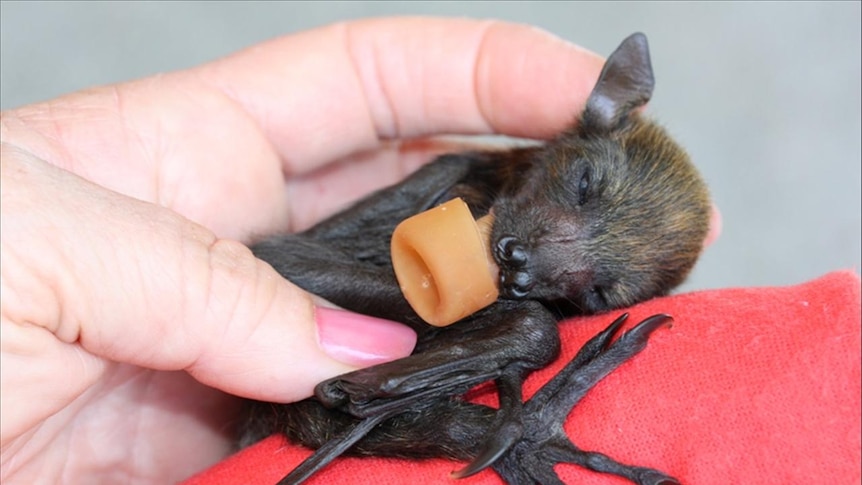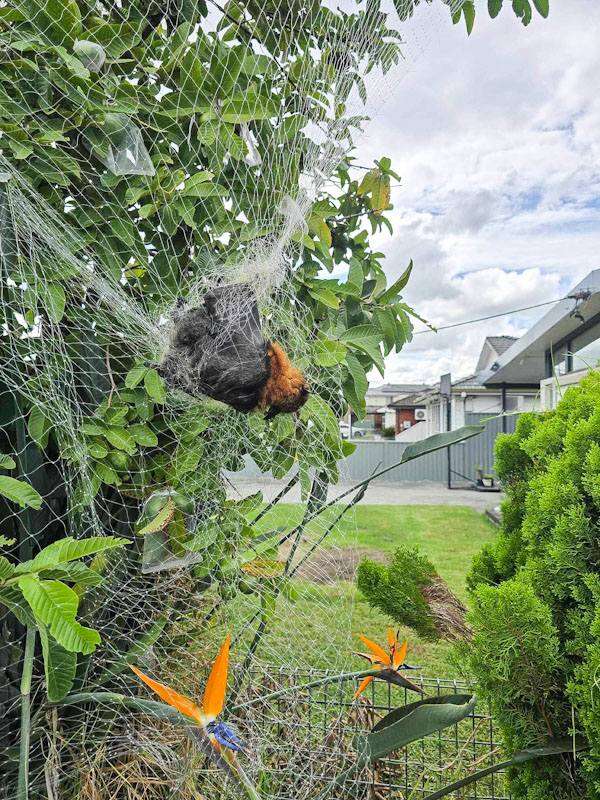
The Prisoner in the Pear Tree
In the quiet suburbs of Liverpool, Australia, a backyard is a place of familiar comforts: the scent of cut grass, the drone of a distant lawnmower, the familiar shape of a fruit tree against the sky. But one afternoon late last month, a homeowner’s peaceful routine was broken by something horribly out of place. In her pear tree, wrapped in the protective netting meant to save the fruit, was a dark, struggling bundle of life.
From a distance, it was unidentifiable. As she drew closer, the tragic picture came into focus. A beautiful grey-headed flying fox was hopelessly ensnared. This was no simple snag; the bat was cocooned in the mesh, a prisoner in a silent, unyielding trap. It was clear she had been fighting for hours. With every desperate twist and panicked beat of her wings, the synthetic threads had only tightened their grip, winding around her delicate body and fragile, leathery wings. Her struggle for freedom had become the very mechanism of her imprisonment. Exhaustion had set in, and her movements were becoming weaker. Realizing this was a life-or-death situation far beyond her expertise, the homeowner did the best thing she could: she called for help from Sydney Wildlife Rescue.
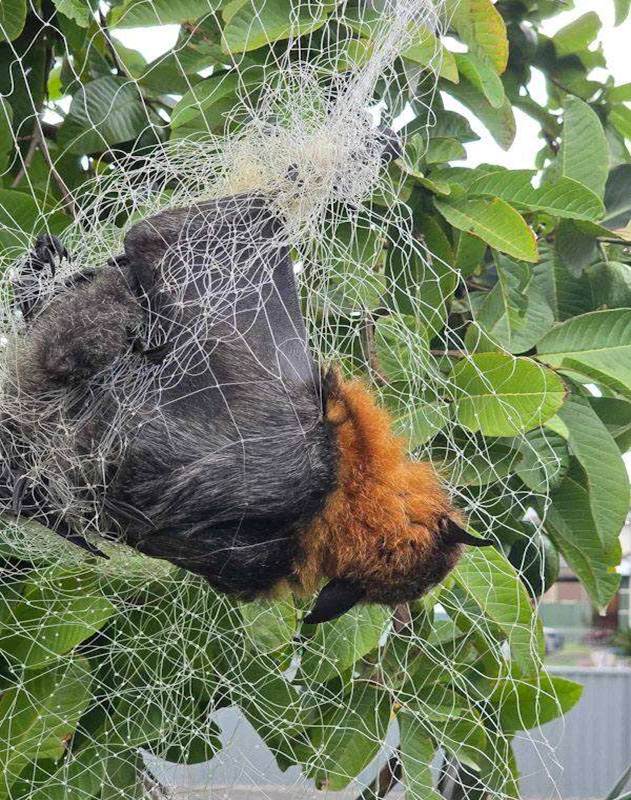
A Gentle Hand in a Moment of Panic
When volunteer Bel arrived on the scene, she brought with her a sense of calm authority and deep compassion. She immediately identified the trapped animal and understood the delicacy of the situation. This wasn’t a task for brute force, but for surgical precision and immense patience. For the next 25 minutes, the world seemed to shrink to that small section of the pear tree. With a pair of small, sharp snips, Bel began the painstaking process of untangling a life, thread by thread.
The bat, whom they would later name Willow, was understandably terrified. Trapped and facing a large human, her instincts screamed danger. But Bel worked quietly and methodically, likely murmuring soft words of reassurance as she navigated the labyrinth of netting. Each snip was a tiny victory, a small step toward liberation. The net was wound so tightly around Willow’s body that it had become a second skin. Finally, with one last, careful cut, the final thread gave way. The tension released, and as the suffocating mesh fell away, it revealed the most delicate, sweet face, no longer contorted by fear, but weary and vulnerable. Her ordeal in the tree was over.
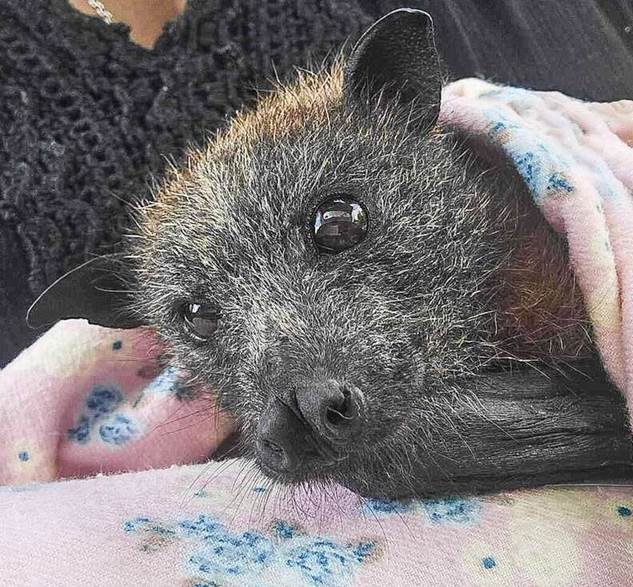
More Than a Rescue: The Plight of the Nighttime Gardeners
Willow’s story, while dramatic, is unfortunately not unique. As Janine Davies of Sydney Wildlife Rescue explains, these encounters are becoming tragically common. The grey-headed flying foxes are nomads of the night sky, following ancient rhythms tied to the blossoming of native trees. But their world is shrinking. “When there are not sufficient eucalyptus blossoms or native fruits available, flying foxes will look elsewhere for a food source,” Davies noted. Habitat loss is forcing these essential creatures out of the forests and into our backyards. They aren’t intruders; they are refugees, driven by hunger to the tempting fruit growing in suburban gardens.
These magnificent animals are the invisible gardeners who stitch the forests together while the world sleeps. As they feast on nectar and fruit, pollen clings to their furry bodies, catching a ride to the next tree, ensuring the health and genetic diversity of the ecosystem. They are “nighttime pollinators,” vital to the survival of countless native plants. When one gets trapped in netting, it’s not just an animal in distress; it’s a crucial link in the environmental chain being broken. To protect them, the rescue advocates for wildlife-safe netting. As Davies warns, “If the mesh is large enough to fit your fingers through, wildlife can become trapped.” Choosing a finer mesh is a small, simple act of stewardship that can prevent these terrible ordeals from ever happening.
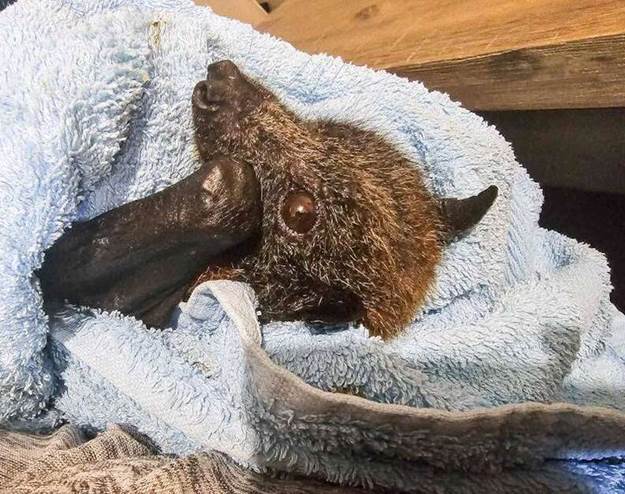
Healing Wings and the Promise of Freedom
With Willow finally free, Bel gently transported her to the rescue facility. There, she received the medical attention she desperately needed. Thankfully, her injuries were minor—a testament to the homeowner’s quick call for help. At the shelter, she was given not just medicine, but sanctuary. She was pampered with juicy, cool fruit—a sweet balm to a parched throat and a welcome feast after her exhausting struggle.
For now, Willow will remain in the care of her dedicated rescuers. They will monitor her recovery, ensure she is strong and healthy, and give her the space to heal from the trauma of her experience. Her story is a powerful example of a chain of compassion: from the homeowner who noticed and cared, to the volunteer who acted with skill and kindness, to the team providing restorative care.
Soon, the day will come when Willow is deemed fully recovered. On that day, she will be taken back to a place where she can thrive, and she will be released. She will once again stretch her wings, not against the unyielding prison of a net, but against the velvet darkness of the night sky. She will rejoin her colony, free to soar and continue her vital work, a survivor’s story written on the wind.

